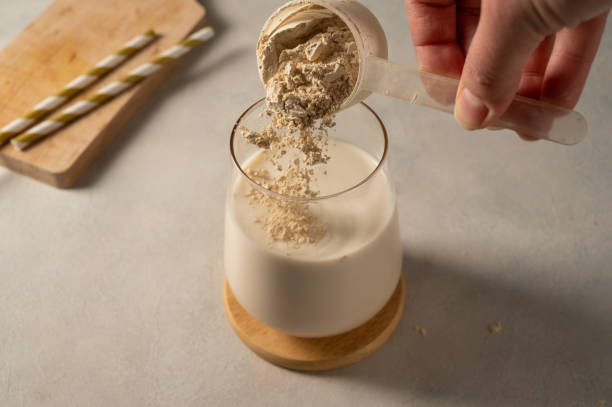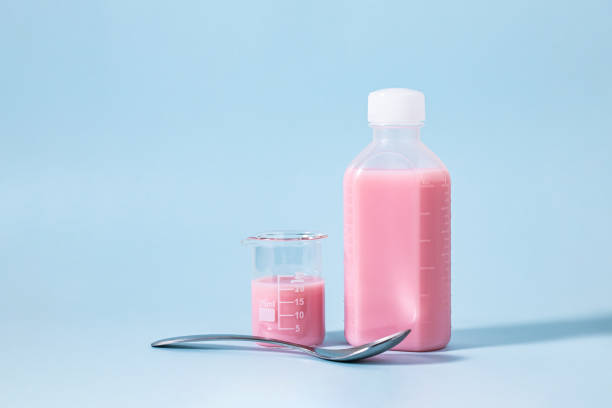Have you been told you have IBS… but your symptoms never seem to go away? Maybe you’ve tried the low FODMAP diet, maybe probiotics, maybe medications — but nothing sticks.
The real reason could be something called SIBO: Small Intestinal Bacterial Overgrowth. Basically, it means you’ve got bacteria growing in the wrong place—the small intestine—in quantities they shouldn’t be in, which can be the root cause of many gut symptoms.
And this might not be as rare as first thought. Research shows that about one in three people with gut complaints actually test positive for SIBO. Depending on the study, up to 78% of IBS patients may have SIBO as the root cause of their symptoms (1).
So if you’ve been dismissed with “it’s just IBS” or told gut issues are just part of getting older, in many cases, it’s actually SIBO. But here’s what most doctors miss: SIBO is not just one thing. Depending on the gas being produced — hydrogen, methane, or hydrogen sulfide — the symptoms and treatments can look very different.
Here is a video we made, otherwise there is a written version underneath.
What Is SIBO and Why It Matters
SIBO stands for Small Intestinal Bacterial Overgrowth. It occurs when bacteria that normally live in your large intestine migrate up into your small intestine and multiply to excessive levels where they don’t belong.
These bacteria ferment the food you eat, producing gases that cause uncomfortable symptoms like bloating, gas, abdominal pain, and changes in bowel habits—symptoms that are often mistaken for IBS.
The Shocking Statistics
Research reveals a startling connection between IBS and SIBO. In one landmark study of 202 IBS patients, 78% tested positive for bacterial overgrowth. This means that for the majority of people diagnosed with IBS, the real culprit is actually SIBO (2).
My name is Joe Leech, I’m a qualified dietitian, and I run one of the world’s largest online gut health clinics. We’ve helped tens of thousands of clients successfully treat their gut issues, especially SIBO and its subtypes. And knowing which one you have is important — because it changes how you treat it.
Summary: SIBO occurs when bacteria overgrow in the small intestine, causing symptoms commonly misdiagnosed as IBS. Up to 78% of IBS patients actually have SIBO as the root cause, making proper identification and subtype-specific treatment critical for resolution.
Hydrogen-Dominant SIBO: The Diarrhea Type
The first subtype of SIBO is hydrogen-dominant SIBO, and it’s often linked with IBS-D—the diarrhea type.
These bacteria ferment your food quickly, creating hydrogen gas and speeding up transit time, which causes chronic loose stools and diarrhea. Many people with this subtype find themselves constantly dealing with urgency and unpredictable bowel movements.

How Hydrogen SIBO Is Detected
The way this type of SIBO is detected—in fact, the way all types are detected—is through a breath test.
Essentially, on a breath test, you’ll see hydrogen levels rise 20 ppm or more within 90 minutes, while methane stays below 10 ppm. This pattern is the key diagnostic marker for hydrogen-dominant SIBO.
Summary: Hydrogen-dominant SIBO causes rapid food fermentation leading to diarrhea and urgency, detected through breath tests showing elevated hydrogen levels. This subtype speeds up intestinal transit time, making it the primary cause of IBS-D symptoms in many patients.
Treatment Options for Hydrogen SIBO
First-Line Treatment: Rifaximin
In terms of treatment options, first-line is typically a well-studied antibiotic called rifaximin, which is prescription-only (3). It works well because it stays in the gut and knocks down the bacterial load without being absorbed systemically.
Research indicates the recommended dose is:
- 1650mg per day split into 3 doses for 14 days
- Has a 70% success rate for hydrogen SIBO specifically
Alternative Treatment: Herbal Therapy
An alternative to the pharmaceutical approach is herbal therapy. These herbal antimicrobials help reduce bacterial load and have demonstrated symptom improvements comparable to antibiotics in some studies (4).
There are many different protocols used, but essentially the staples are:
- Berberine: At least 400mg twice daily
- Oregano oil: At least 150mg per day
- Additional compounds: Allicin, neem, and others may be added
Important: Don’t actually do any of this yourself without seeking direct guidance from a health professional first.
The protocol can be between 2-8 weeks, and in many instances is more affordable than rifaximin, but it takes longer to see results.
The Role of Diet
In terms of diet, a strict low FODMAP diet is recommended after the antibiotic or antimicrobial process, then structured reintroduction.
Essentially, it’s a proven diet protocol that removes the most fermentable carbs from your diet—the “fuel” for bad bacteria—and reintroduces them later, step by step, to minimize symptoms and help determine what foods are accelerating intestinal transit time.
Summary: Hydrogen SIBO is effectively treated with rifaximin (70% success rate) or herbal alternatives like berberine and oregano oil, followed by a low FODMAP diet. Treatment duration varies from 2-8 weeks depending on the approach, with herbal therapy being more affordable but requiring longer commitment.
If you’re just getting started, download our free Low FODMAP food list to get clarity on common gut triggers
Tap the blue button below to download our “Eat This, Not That” list as well as additional resources for bloating (it’s free!)

Methane-Dominant SIBO (IMO): The Constipation Type
The second subtype of SIBO is methane-dominant SIBO—now called Intestinal Methanogen Overgrowth or IMO.
What happens here is you have microbes in the digestive tract producing excessive methane gas, which acts like a neurotransmitter in your gut. Methane literally slows down gut motility, and everything gets backed up.
That’s why people with methane SIBO get:
- Constipation or IBS-C
- Hard stools
- Severe bloating
- That feeling of incomplete evacuation
How Methane SIBO Is Detected
On testing to confirm this, you’ll see methane levels of 10 ppm or higher at any time point. Often, methane is elevated even in the baseline fasting sample, which is a distinguishing feature of this subtype.
Summary: Methane-dominant SIBO produces methane gas that slows gut motility, causing constipation, bloating, and incomplete evacuation. Detected when breath tests show methane levels of 10 ppm or higher, this subtype is now clinically recognized as Intestinal Methanogen Overgrowth (IMO).
Treatment Options for Methane SIBO
Why Methane SIBO Is Harder to Treat
In terms of first-line treatment, methanogens are really tough to eradicate. Studies show that rifaximin alone is usually not enough for this subtype (5).
The standard is a combination of rifaximin plus another antibiotic that specifically targets methanogens.

Recommended Antibiotic Protocol
Clinical guidelines recommend:
- Rifaximin: 1650 mg/day
- Plus Neomycin: 1000 mg/day
- Duration: 14 days
This combination has shown success in reducing methane levels and improving constipation symptoms.
There are some alternative combination therapies you may try with your doctor, depending on how you respond. Just know that multiple courses of therapy are not uncommon for this type of SIBO, given that methane producers can be stubborn.
Herbal Therapy for Methane SIBO
As for herbal therapy alternatives, these are actually frequently used for methane SIBO, either alone or alongside antibiotics.
Notably, Allicin (an extract of garlic) is a favored herb for methane due to its targeted effect on methanogens. Practitioners often combine allicin with other botanicals like berberine, oregano, and neem.
A protocol might use:
- Allicin: 450mg three times daily
- Plus Berberine: 500mg three times daily
Again, I’m just stating doses that have been studied, but you need to speak to your health professional before you do anything.
Keep in mind that while herbs can work, they require longer treatment duration (usually 6+ weeks), and many patients actually alternate herbal therapy and antibiotic courses to minimize resistance or side effects.
Diet Considerations for Methane SIBO
As for diet, this is the exciting part.
First, I’ll say that low FODMAP is still indicated here because methanogens thrive on fermenting fibers. High-fiber foods (beans, oats, cruciferous veggies, etc.) can lead to more methane and bloating.
So yes, low FODMAP and low fiber are beneficial until symptoms are back under control, at which point you would start exploring different types of fibers. The key is to identify triggers and eat a balanced diet that doesn’t excessively “feed” the methane producers.
Summary: Methane SIBO requires combination antibiotic therapy (rifaximin plus neomycin) or longer-duration herbal protocols featuring allicin and berberine. Multiple treatment courses are common due to stubborn methanogens, and a low FODMAP, low-fiber diet is essential during the elimination phase.
The Breakthrough Elemental Diet Protocol
The most exciting development in SIBO treatment is a new 14-day elemental diet protocol, which I won’t be surprised if it becomes the first-line treatment for SIBO, especially hydrogen and methane-dominant, in the future.
Currently, I rate it as a fallback if other treatments don’t or can’t work because it’s expensive and a bit unpleasant to eat, to be real. An elemental diet is a liquid diet of pre-digested nutrients that requires no digestion by the body, and that’s all you eat for two weeks straight.
The Unprecedented Results

A recent peer-reviewed study presented at major digestive conferences around the world found that 73% of SIBO patients objectively normalized their breath test with this 14-day elemental diet protocol (6).
So just about 3 out of 4 patients had normal breath test readings after just 2 weeks, no antibiotics or anything else—even those with stubborn methane-dominant SIBO. That’s unprecedented.
Patient compliance rate was also 100%—never before achieved with an elemental diet—which indicates this particular formula doesn’t taste as awful as its predecessors because everyone completed the 14 days.
Summary: A new 14-day elemental diet protocol achieved a 73% normalization rate in SIBO breath tests with 100% patient compliance, representing a breakthrough in treatment effectiveness. While currently expensive and used as a backup option, this approach may become first-line treatment for hydrogen and methane SIBO in the future.
Hydrogen Sulfide-Dominant SIBO: The Hidden Type
The third and final SIBO subtype is hydrogen sulfide-dominant SIBO, and it was only recently recognized because standard breath tests couldn’t measure it.
Patients would get normal “flat line” results—so little hydrogen or methane rise in the chart—despite having clear symptoms. This led to years of misdiagnosis and frustration for many people.
What Causes the Symptoms
What’s happening here is that excess bacteria are feeding on sulfur and producing hydrogen sulfide gas. That’s the gas that gives stools and flatulence the classic rotten egg smell.
To give you a picture: when I was a child visiting Rotorua in New Zealand, that place had that same sulfur smell from volcanic activity. I’ll never forget it. It’s the exact same gas—hydrogen sulfide—whether it’s coming from a volcano or from bacteria in your gut.
A Real Patient Experience
We had a client describe their experience as:
“I had constant diarrhea, intense rotten egg-smelling gas and bowel movements, major bloating after eating high FODMAP foods. I wasn’t formally diagnosed, but the symptoms were unmistakable.”
Fortunately, we now have access to newer breath tests on the market that can detect hydrogen sulfide SIBO, which is important because the treatment differs from the other SIBO subtypes.
Summary: Hydrogen sulfide SIBO was historically undetectable by standard breath tests, causing patients with characteristic rotten egg-smelling gas to go undiagnosed. Newer testing can now identify this subtype, which requires different treatment approaches than hydrogen or methane SIBO.
Treatment Options for Hydrogen Sulfide SIBO
The Role of Bismuth

Rifaximin can still help with hydrogen sulfide SIBO, but we often add bismuth—the active ingredient found in some over-the-counter stomach medicines like Pepto-Bismol—which binds hydrogen sulfide gas and reduces those sulfur-producing bacteria.
This bismuth solution has been known for decades. In one study, taking 524 mg four times daily reduced hydrogen sulfide production by up to 95% (7).
What the Research Shows
What’s interesting is that a 2023 clinical registry of 131 hydrogen sulfide cases found the most effective treatments were (8):
- Low-sulfur diets: 46.6% success
- Oregano oil: 44.0% success
- Bismuth compounds: 39.7% success
The Critical Role of Diet
Diet changes are arguably the most important in this SIBO subtype because it’s a delicate balance to ensure proper nutrition while not “feeding” the bacteria too many FODMAPs (which they will ferment and cause symptoms), but also not consuming too many sulfur-containing foods either.
Foods to avoid:
- Eggs, garlic, onions
- Cruciferous vegetables (broccoli, cauliflower, cabbage)
Herbs like oregano and berberine are sometimes added to the treatment protocol, just as with the other SIBO subtypes.
Diet and eating patterns in general are very individualized, especially when we talk about meeting nutrition requirements for a particular person. Essentially, you want to meet those requirements but minimize the sulfur-containing foods and minimize FODMAPs.
Summary: Hydrogen sulfide SIBO treatment combines bismuth supplementation (524mg four times daily) with low-sulfur diets showing the highest success rates at 46.6%. This subtype requires careful balancing of nutrition while limiting both FODMAPs and sulfur-containing foods like eggs, garlic, and cruciferous vegetables.
Why SIBO Keeps Coming Back
Now here’s the hard truth: about 45% of people relapse within a year and SIBO returns.
That’s because if you don’t fix the underlying issue—things like motility, diet, or gut function—the bacteria just come back.
The Mold Analogy
It’s like mold in a house. You can scrub it off the walls, but if the damp leak behind the wall isn’t fixed, the mold always returns. The same principle applies to SIBO—treating the bacterial overgrowth without addressing why it happened in the first place leads to recurrence.

The Four Essential Steps
So if you suspect SIBO, the steps you need to take are:
- Step 1: Get the right breath test to identify your specific SIBO type
- Step 2: Choose the most appropriate treatment approach for your subtype
- Step 3: Address underlying causes and triggers (motility issues, low stomach acid, structural problems)
- Step 4: Plan for maintenance and avoid recurrence through ongoing dietary and lifestyle management
Summary: Nearly half of SIBO patients experience recurrence within a year if underlying causes aren’t addressed alongside bacterial treatment. Successful long-term management requires identifying your SIBO subtype, completing appropriate treatment, and addressing root causes like motility dysfunction to prevent the bacteria from returning.
Your Next Steps for Healing SIBO
If you’ve been frustrated by persistent bloating despite careful low FODMAP adherence, it’s important to understand which type of SIBO you have is the first step toward effective treatment. Whether you’re dealing with hydrogen-dominant diarrhea, methane-dominant constipation, or the elusive hydrogen sulfide type with its characteristic sulfur smell, there are proven treatment protocols that can help.
The Path Forward
Success with SIBO requires:
- Addressing underlying causes to prevent recurrence
- Proper testing to identify your specific subtype
- Targeted treatment with antibiotics, herbs, or an elemental diet
- Dietary modifications appropriate to your subtype
Professional Guidance Makes the Difference
If you’re struggling with persistent gut symptoms and suspect SIBO might be the underlying cause, professional guidance can help you navigate testing, treatment, and long-term management.
To learn more, I invite you to apply for a nutrition assessment call with us. We’ll help you identify which SIBO subtype you might have and create a personalized treatment plan—not just temporarily managing symptoms, but addressing the root causes for lasting relief.

What is the cost of the assessment call
Cost of assessment? Need other options since my Dr gave me an antibiotic that was $800 per mo. Can’t do it.